140 + 51 points
Craaank by Ben Yamiin
May 6th, 2009 10:54 AM
The epic journey from Niamey, Niger to Timbuktu, Mali
Back in the days before easy transportation, 44 Europeans attempted to travel to Timbuktu. 4 made it. 3 made it home.
They were coming from the north. I came from the southeast. Starting in Niamey, Niger (the capital) on April 30th at 6:00 in the morning, I hopped on a bus to Gao, the largest town in eastern Mali. Between Niamey and Gao is about 400 km. Back before they sealed the road (two years ago) it used to take up to 3 days. Now, it usually takes about 6-8 hours. It took me...a bit longer.
We hit the Malian border by about 10:00. After the formalities, we continued on, but broke down at about 1:00 pm. We were stuck in a tiny village for about 3 hours, but got going again around 4:00 pm. We made it about 30 km, then broke down again, this time for about 5 hours. I learned to drink the local water due to the fact that it was the only beverage available. It had bugs in it.
When we got going again, we only were able to limp to Aysombo, a small town about 100 km from Gao. We were stuck there for the night, so I had to sleep on my towel under the stars at the bus station. (NB - Bus stations in West Africa aren't like bus stations in the US or Europe. They're more like a walled off sandy patch where the buses tend to congregate like large animals at an oasis).
We got going again (thankfully in a new bus) the next morning and arrived in Gao at about 9:00 am on May 1st. I stayed the night at a hotel there, checked out the cool mosque-tomb, and went to an area where one can find 4x4s going to Timbuktu at about 12:00 pm. It's run by a guy they call Le Chef (The Chief) a big, imposing Songhaï who runs the 4x4 business with an iron fist. Luckily, two 4x4s were going that day. Unluckily, the spots in the cabin were already sold out. Basically, the 4x4s are big pickup trucks with really big tires and strong suspensions for crossing the desert. There are three spots in each one in the cabin, one for the driver and the other two up for sale. Any other passengers are instead on the bed of the truck. It's important that I mention "on the bed" rather than "in the bed" because the beds are full of luggage and cargo like a heaping tablespoon of sugar. This is then covered with a net designed to keep everything from falling off. The net is then covered with the passengers. I was one of those passengers.
When I mentioned that this was my first time traveling in this way, the others were nice enough to put me on the truck with 3 people clinging for dear life on to the net, rather than 12. I also got to share the bed with a door*, for some reason. This was my view for the next 19 hours:
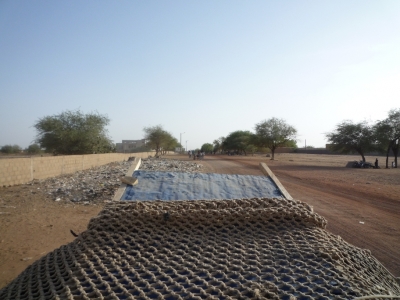
We then set off. The 'road' to Timbuktu is not so much a road, not even a dirt road, as two ruts where the tires of all the previous 4x4s came through. As such, it's really really bumpy, to the extent that if I were to have let go of the net for more than 10 seconds or so or were to have fallen asleep, I would probably have flown off the back at between 50-100 km/hr on to the desert sands. Which would be painful. And I'm not sure the driver would have turned around.
We stopped every so often for just long enough for someone to get on or get off. As such, the number of people on my truck never stayed at 3 - it always fluctuated between 3 and 12. The clientele was varied - Tuaregs, Songhaï, Bambaras, even an Arab here and there. No other non-Africans, however.
We eventually, at about 9 pm, stopped for 20 minutes to get dinner, which consisted of some meat thrown on a fire in a small village. Thankfully, they also had Coca-Cola. I spent the entire time stretching and hobbling about, trying to restore bloodflow to my limbs.
We didn't stop again until about midnight. We stopped in the middle of the desert to rest for a few hours. Unfortunately, I was only in my galabeya (long Arabic shirt-thing) and couldn't get to my bag (which was underneath a net and all the other bags. As such, I wasn't able to sleep and spent the entire time walking around and fidgeting to stay warm. But the desert at night was beautiful. It was the quietest place I've ever been - cities are loud because of the traffic and the people, while the wilderness is alive with animal noises. This had no noise whatsoever. And the stars shined so bright.
We got going again and didn't stop for another few hours, when we stopped for about 10 minutes for some morning tea. From there, it was a straight shot to Timbuktu (except for a short portion where the driver mistook a tree for the road. Thankfully, unlike 3 of the other passengers in the back, I didn't get stabbed by the branches.)
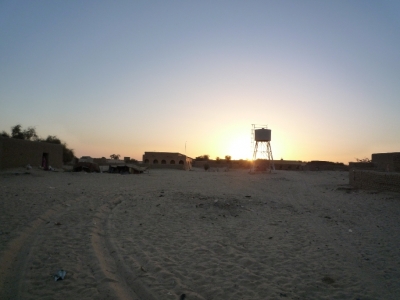
As that great old city crested over the horizon, I started to thank God in Arabic along with all the other passengers. We pulled into town, and I stood up in the back of the truck, my face covered, the end of my turban fluttering in the breeze. After a harrowing trip, I finally arrived in that mythical city of learning. I was the only one who made the entire journey on the back of the truck - the others either got off earlier or got on later. I was covered in bruises, my hands were torn to ribbons, my lips were so chapped that I looked like a politically incorrect caricature of my fellow passengers, and I felt amazing.
* this is even stranger considering that Timbuktu has some of the most amazing doors and windows I've ever seen. I've attached a few pictures of them at the bottom.
Back in the days before easy transportation, 44 Europeans attempted to travel to Timbuktu. 4 made it. 3 made it home.
They were coming from the north. I came from the southeast. Starting in Niamey, Niger (the capital) on April 30th at 6:00 in the morning, I hopped on a bus to Gao, the largest town in eastern Mali. Between Niamey and Gao is about 400 km. Back before they sealed the road (two years ago) it used to take up to 3 days. Now, it usually takes about 6-8 hours. It took me...a bit longer.
We hit the Malian border by about 10:00. After the formalities, we continued on, but broke down at about 1:00 pm. We were stuck in a tiny village for about 3 hours, but got going again around 4:00 pm. We made it about 30 km, then broke down again, this time for about 5 hours. I learned to drink the local water due to the fact that it was the only beverage available. It had bugs in it.
When we got going again, we only were able to limp to Aysombo, a small town about 100 km from Gao. We were stuck there for the night, so I had to sleep on my towel under the stars at the bus station. (NB - Bus stations in West Africa aren't like bus stations in the US or Europe. They're more like a walled off sandy patch where the buses tend to congregate like large animals at an oasis).
We got going again (thankfully in a new bus) the next morning and arrived in Gao at about 9:00 am on May 1st. I stayed the night at a hotel there, checked out the cool mosque-tomb, and went to an area where one can find 4x4s going to Timbuktu at about 12:00 pm. It's run by a guy they call Le Chef (The Chief) a big, imposing Songhaï who runs the 4x4 business with an iron fist. Luckily, two 4x4s were going that day. Unluckily, the spots in the cabin were already sold out. Basically, the 4x4s are big pickup trucks with really big tires and strong suspensions for crossing the desert. There are three spots in each one in the cabin, one for the driver and the other two up for sale. Any other passengers are instead on the bed of the truck. It's important that I mention "on the bed" rather than "in the bed" because the beds are full of luggage and cargo like a heaping tablespoon of sugar. This is then covered with a net designed to keep everything from falling off. The net is then covered with the passengers. I was one of those passengers.
When I mentioned that this was my first time traveling in this way, the others were nice enough to put me on the truck with 3 people clinging for dear life on to the net, rather than 12. I also got to share the bed with a door*, for some reason. This was my view for the next 19 hours:

We then set off. The 'road' to Timbuktu is not so much a road, not even a dirt road, as two ruts where the tires of all the previous 4x4s came through. As such, it's really really bumpy, to the extent that if I were to have let go of the net for more than 10 seconds or so or were to have fallen asleep, I would probably have flown off the back at between 50-100 km/hr on to the desert sands. Which would be painful. And I'm not sure the driver would have turned around.
We stopped every so often for just long enough for someone to get on or get off. As such, the number of people on my truck never stayed at 3 - it always fluctuated between 3 and 12. The clientele was varied - Tuaregs, Songhaï, Bambaras, even an Arab here and there. No other non-Africans, however.
We eventually, at about 9 pm, stopped for 20 minutes to get dinner, which consisted of some meat thrown on a fire in a small village. Thankfully, they also had Coca-Cola. I spent the entire time stretching and hobbling about, trying to restore bloodflow to my limbs.
We didn't stop again until about midnight. We stopped in the middle of the desert to rest for a few hours. Unfortunately, I was only in my galabeya (long Arabic shirt-thing) and couldn't get to my bag (which was underneath a net and all the other bags. As such, I wasn't able to sleep and spent the entire time walking around and fidgeting to stay warm. But the desert at night was beautiful. It was the quietest place I've ever been - cities are loud because of the traffic and the people, while the wilderness is alive with animal noises. This had no noise whatsoever. And the stars shined so bright.
We got going again and didn't stop for another few hours, when we stopped for about 10 minutes for some morning tea. From there, it was a straight shot to Timbuktu (except for a short portion where the driver mistook a tree for the road. Thankfully, unlike 3 of the other passengers in the back, I didn't get stabbed by the branches.)

As that great old city crested over the horizon, I started to thank God in Arabic along with all the other passengers. We pulled into town, and I stood up in the back of the truck, my face covered, the end of my turban fluttering in the breeze. After a harrowing trip, I finally arrived in that mythical city of learning. I was the only one who made the entire journey on the back of the truck - the others either got off earlier or got on later. I was covered in bruises, my hands were torn to ribbons, my lips were so chapped that I looked like a politically incorrect caricature of my fellow passengers, and I felt amazing.
* this is even stranger considering that Timbuktu has some of the most amazing doors and windows I've ever seen. I've attached a few pictures of them at the bottom.
12 vote(s)
4













Charlie Fish
3
Peter Garnett
3
teucer
3
susy derkins
4
SPJ
5
Mr Everyday
4
Kara Thrace
5
rongo rongo
5
Entropic Electricity
5
anna one
5
artmouse
5
Bionic Moses
Favorite of:
Terms
(none yet)5 comment(s)
posted by susy derkins on May 6th, 2009 10:26 PM
There's a frood who really knows where his towel is.
posted by Mr Everyday on May 7th, 2009 6:31 AM
I find it to be appropriate that you are a cartographer...
posted by Ben Yamiin on May 8th, 2009 12:29 PM
That's funny that you mention it, because I'm notorious for getting lost. And because I actually know quite well a real cartographer.
posted by rongo rongo on May 11th, 2009 7:29 PM
Wow. Clinging to a net does sound like a super-authentic way to travel, but also like a serious ordeal.






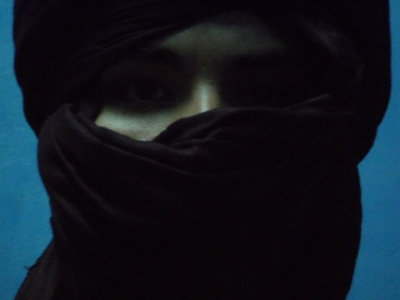















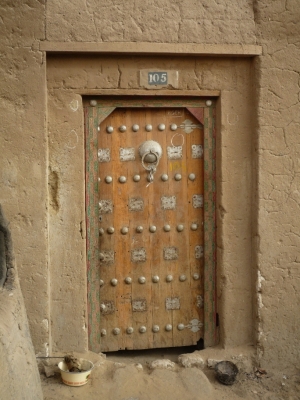
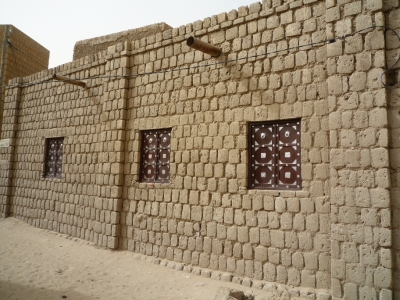




Great story, well told.
You must be soooooore!